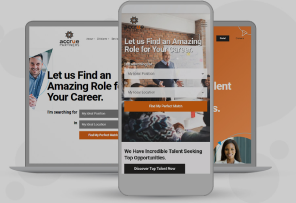LinkedIn has become a critical tool for companies and brands around the world. With more than 756 million members from 200 countries, this one website has helped countless millions of people find jobs, make connections with colleagues and mentors, and build their careers.
In addition to being beneficial for individuals, LinkedIn has become a critical marketing tool for companies. There are more than 57 million individual companies that use LinkedIn, and that number is growing by the day.
Your LinkedIn page can make an amazing first impression and serve as an online hub for your company. However, like any social networking platform, LinkedIn has certain best practices for its use that will help any company page stand out from its millions of competitors. Anyone can create a LinkedIn page, but it takes concerted effort and dedicated work to make your page a viable marketing resource.
Today, let’s talk about some of the best practices that companies can follow when setting up and maintaining their LinkedIn presence.
1. Create your company page and fill in all relevant details
There’s no point in having a LinkedIn company page that’s light on details. Without being listed in the proper geographic and business categories, it will be very difficult for your customers and stakeholders to find your page.
When you’re first setting up your LinkedIn page, make sure to fill in all the relevant details, including your location, industry, company size, and more. These details will help people learn about your company, but they’ll also help ensure that it can be found using the site’s search function.
As you’re filling out your company’s profile, make sure the language and tone you’re using match your company’s overall brand voice. This is critical to ensure that your LinkedIn page represents your company well. The best brands maintain a consistent brand voice throughout every piece of writing that they publish, regardless of whether it’s a sales letter, social media page, or company website.
2. Consider the visual appearance of your page
In addition to the language you use on your page, it’s important to make sure that the visual appearance of your page matches your company branding. On LinkedIn, the pages are set within a certain framework, but there are a few different opportunities for visual branding.
The logo is one area that most people personalize, but too many people overlook the opportunity to customize the cover photo, which sits right behind the logo.
3. Share your page
It’s too easy to create a page on LinkedIn, then hope that the LinkedIn algorithm will put you in front of potential connections. Unfortunately, LinkedIn will only work as well as you make it work for you.
Sharing your page is the best way to widen your potential audience. Make sure there’s a LinkedIn button on your website, and add links and share buttons to your newsletter, as well as any other outreach you’re doing. You can also ask your employees to share the company page through their personal pages, and link their profiles to the main company page. This helps widen your company’s network of connections.
4. Identify your ideal customer
The more you understand your intended audience, the better you’ll be able to create content and optimize your profile with them in mind. This is often called buyer persona research.
A buyer persona is a fictionalized description of your ideal customer (or customers). It involves creating a fake character and collecting all the various demographic details of your ideal customer, so you can market to them accordingly. For example, the way you write your profile and post will be different if your ideal customer is a 50-year-old IT manager versus a 20-year-old marketing intern.
5. Create and share content
One of the best ways to ensure that you’re getting a steady stream of visitors to your LinkedIn page is to regularly create and post new content. Most businesses that utilize LinkedIn do this through a deliberate marketing strategy.
Whether you create videos, blogs, or even go Live, both the format and the message of your content should be tailor-made to suit your audience. Ultimately, you should be regularly creating content that is both useful and interesting for the demographic you’re trying to attract.
Even if you’re creating and posting white papers or thought leadership pieces, make sure to include some visual component within every post. That, along with catchy titles, will help your posts stand out from a newsfeed full of similar content.
Ultimately, a strong LinkedIn page is just one aspect of a successful marketing strategy. By using it well, you can help grow your company’s reputation and make meaningful connections with new customers and prospects.



